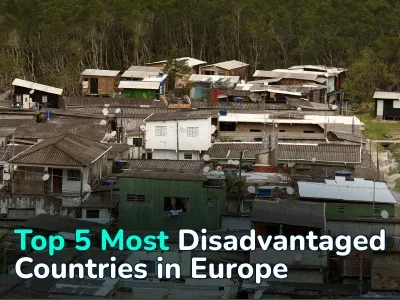
Getting a handle on Indian life: the cost of living, things that are challenging to adjust to, and the housing situation
“Be happy with what you have right now” is the main lesson one learns from living in India, says our interviewee Tatin. In addition to the lessons that this wonderful country teaches, Tatin also shared with us her knowledge about the costs of housing and its search, the mentality and philosophy of the locals, and the pros and cons of everyday life.
“Initially, it was hard to get used to the Indian rule of ‘tomorrow after tomorrow.’”
— My name is Tatin and I'm 28 years old. I'm a DJ, singer, and vocal coach. I first came to India three years ago, and now I live here for seasons in the most touristy state, Goa. Basically, there are two seasons in Goa—the tourist season and the rainy season. From April, the temperature starts to rise and there is a lot of heat; from June to September, it rains in the coastal states; and from October to March, the most favorable tourist season continues. But it is worth saying that the boundaries between these periods are already blurred, and many people live in India permanently.
My everyday life in India is like this: I work during the day, teach online and offline, have concerts in the evenings, perform in clubs at night, and in my free time I meet friends, do my everyday routine, and so on. For me, the main rule in India is to wake up in the morning and get out of the house. From here on, all the activities somehow find themselves.



The pluses of living in India for me are, of course, the sun, the palm trees, the sea, and the humidity in the air; that is, there is always moisturized skin, good hair, and so on. I like the freedom of self-expression and that there are many creative and open-minded people, as well as the fact that people here have no age.
Of the minuses, the first thing that comes to mind is that the locals have low emotional intelligence. Sometimes it can be very hot here, and living closer to the jungle, you have to accept the fact that there will be all sorts of bugs, frogs, etc. at home.
According to my observations, Indians are very emotional, and, as it is said, Bollywood flows in their blood. But at the same time, I like that they are very polite, even a bit fearful in a way—if we're talking about the common people we talk to. The same people who work in commerce are often cheeky and can cheat, and even the law of karma sometimes doesn't scare them.
It was also initially difficult for me to get used to the Indian rule of “tomorrow after tomorrow”: here people are constantly putting things off; sometimes they don't even keep some promises or proceed with them after a long time. But to be honest, for me, it has all become very familiar since I live with Indian friends and am in this culture every day.


“The prices of rental properties have skyrocketed incredibly.”
— Prices in India are different, both for food and other goods. Fruits and vegetables are very cheap here, but cheese, for example, is very expensive. Tech can be ordered on Amazon for average prices, but clothes can be found in different places and at different prices.
For example, you can buy things for the price we are accustomed to in the malls in Bangalore or Mumbai. Or you can go to the Aramboli market or the market in Mapusa. I, for example, bought a large tourist backpack at the Indian market for 900 rupees (a little over $10). There is also a special store where they bring clothes of famous brands with a defect in production, and there you can buy, for example, pants and jeans for 400 rupees ($5).
One more option: a large Hill Top market in the Vagator district, where they sell designer things, furnishings, and so on. There, of course, the prices are different, starting at 4,000 rupees or more per item (about $50).
Answering the question of how much money you need to live in India is quite difficult, especially considering the huge jump in real estate prices, but let's make a rough calculation: 25,000 rupees (about $300) to rent an apartment a month, 7000 to rent a bike ($85), 3000 for gasoline ($36), and food, say, will go for 25,000 a month. It turns out that it's not bad to have each month in the range of 60-80 thousand rupees ($730-$970).
— I do not know the prices for buying real estate because foreigners cannot buy property in India. You can only buy it in shares with locals or by becoming a resident of the country.
Real estate rentals skyrocketed incredibly in October 2022, when people with huge budgets arrived and were willing to rent for very large sums of money. Of course, the Indian entrepreneurial streak does not slumber, and prices have grown just incredibly: a year ago, a beautiful room could be rented for 15,000-20,000 rupees ($180-240), and the whole house for 30,000 rupees ($365), but now for such money they are proposing options that are not very good (no air conditioning and minimal furniture).
Now the average market price during the season is 35,000-40,000 rupees a month ($365-490), and when the season passes, you can find something decent for 20,000-25,000 rupees. Plus, you can always try to negotiate a price with the landlord; here, it may work.



— If we move away from prices and talk about the peculiarities of the market, I can tell you about the state of Goa. According to my observations, the real estate market is flourishing here: a lot of hotels and houses are appearing. By the way, a lot of realtors have appeared on the market, which was not the case before. That is, the market is already experiencing a new round of development and is becoming more serious.
Moreover, domestic tourism is strongly developing now. A lot of Indians come to Goa from Delhi, Mumbai, and other states and cities for vacation. Naturally, the availability of supply and demand greatly affects prices.
“India is ready to accept everyone. And then it's up to the individual.”
— India is a huge country, and if we're talking about cities, then, for example, Bangalore has a great infrastructure; it's like the local Silicon Valley. Goa, of course, is different: there are problems with the Internet; there are constant blackouts. If we're talking about the backcountry, we can't talk about any infrastructure there.
But generally speaking, everything in India is improving: for example, Goa has food delivery, and in large cities, there is an Uber — the country is making great strides forward.


— Many people in India live very modestly. They are used to working and to being content with what they have; they are happy and content with what life gives them. This is one of the biggest lessons we learn from living in India: we should be grateful for what we already have.
Who is the right person to live in India? India suits people who are willing to accept things as they are; it suits those who are willing to change their typical routine and learn from others, including the fact that life is much simpler than it seems. In short, it suits open-minded people—with their souls, their hearts, and their outlooks. In general, India is ready to accept everyone. And then everything depends on the person.



Do you want to share your personal experience of relocating and living in another country? Email us at info@realting.com. We will be happy to tell your story.
Author
I am responsible for editorial work. I write expert interviews and guides.























